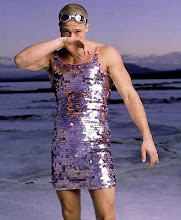Academic writing gets a bad rap. Convoluted, gangly, jargon-larded, empty, pretentious -- there are myriad examples of how the weird world of academia has produced a culture of writing that shows all too clearly the costs of driving generation after generation of scholars to publish or perish without giving even cursory mention of how to go about making the things they publish enjoyable, or even readable in the most basic sense. It is seen as at best indecorous to criticize a paper for inelegance -- as long as it is technically grammatically correct, the criticism should focus on whether it is "correct," whether it is "cohesive," "organized." There is no room for a consideration of beauty, even in literary and cultural studies; sometimes the articles and books I read come off as even jealous or spiteful in relation to the beauty of their objects, ripping them apart and paraphrasing them in the dullest fashion as if actively trying to drain the language of any power beyond that by which the academics themselves are routinely judged — is it cohesive? Organized? Correct?
What is saddening about this situation isn't just that the writing produced by many of the people who care about writing the most is becoming less and less pleasurable to read, but also that there is precious little opportunity to acknowledge when an essay or article or book produced within academia is, indeed, beautiful. The fact is, despite all the factors working against it and despite the generally bad reputation academic writing has even amongst academics, academic writing can achieve a kind of bracing, stirring beauty all its own. So, I feel that the least I can do is share some of my favorite moments in academic writing in a little weekly-or-so feature on this little blog, pieces that have stuck with me both for their insight and their sheer beauty, and which humble and inspire me as I attempt to do right by them in my own attempts at academic authorship.
To kick off this celebration, I have chosen an excerpt from one of my favorite articles by one of my favorite academic authors of all time, "White Glasses," by Eve Sedgwick, which she wrote about her colleague, Michael Lynch, who was dying of AIDS at the time she was writing and who was also something of a fashion icon to Eve with his snazzy white glasses. It is proof to me of the importance of allowing emotion and intellectual precision to inform one another, as opposed to working constantly to keep them apart; I miss the anger of this period of queer theory, and the unapologetic passion that vivified its rigor and prevented it from curdling into mortis.

What is saddening about this situation isn't just that the writing produced by many of the people who care about writing the most is becoming less and less pleasurable to read, but also that there is precious little opportunity to acknowledge when an essay or article or book produced within academia is, indeed, beautiful. The fact is, despite all the factors working against it and despite the generally bad reputation academic writing has even amongst academics, academic writing can achieve a kind of bracing, stirring beauty all its own. So, I feel that the least I can do is share some of my favorite moments in academic writing in a little weekly-or-so feature on this little blog, pieces that have stuck with me both for their insight and their sheer beauty, and which humble and inspire me as I attempt to do right by them in my own attempts at academic authorship.
To kick off this celebration, I have chosen an excerpt from one of my favorite articles by one of my favorite academic authors of all time, "White Glasses," by Eve Sedgwick, which she wrote about her colleague, Michael Lynch, who was dying of AIDS at the time she was writing and who was also something of a fashion icon to Eve with his snazzy white glasses. It is proof to me of the importance of allowing emotion and intellectual precision to inform one another, as opposed to working constantly to keep them apart; I miss the anger of this period of queer theory, and the unapologetic passion that vivified its rigor and prevented it from curdling into mortis.

One thing I learned…is that the white of the glasses means differently for a woman, for a man. The white of the glasses is two things, after all. White is a color—it is a pastel. White the pastel sinks banally and invisibly into the camouflage of femininity, on a woman, a white woman. In a place where it doesn’t belong, on Michael, that same pastel remains a flaming signifier.The entirety of this essay can be found, along with many other gems, in her collection Tendencies (1993)
White is also, however, at the same time no color, the color of color’s own subtraction and absence. At once the white-flaring acid of dissolution, the acid’s crystalline residue and its voided trail, in many cultures white is the color of mourning. On women of all colors white refers, again banally, to virginity (to virginity as absence or to the absence of virginity) and the flirtations of the veil—to ways in which our gender tries to construct us heterosexually as absence and as the dissimulating denial of it, and tries also to inscribe in us, as a standard of our own and other people’s value, the zero-degree no-color of (not the skin of Europeans themselves but) the abstractive ideology of European domination. A white woman wearing white: the ruly orderliness of this sight makes invisible the corrosive aggression that white also is: as the blaze of mourning, the opacity of loss, the opacity loss installs within ourselves and our vision, the unreconciled and irreconcilably incendiary energies streaming through that subtractive gap, that ragged scar of meaning, regard, address.




0 件のコメント:
コメントを投稿